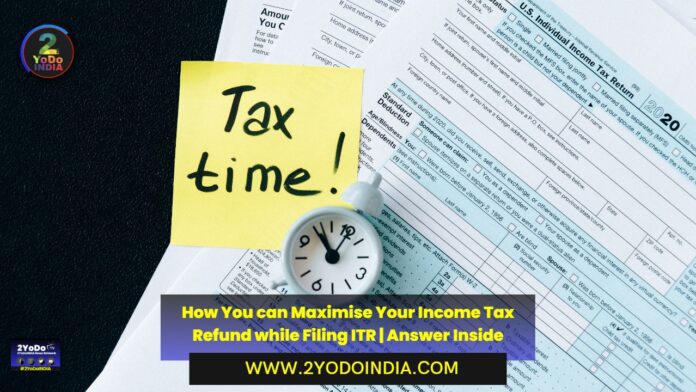The last date for filing your Income Tax Returns (ITR) for financial year 2022-23 is 31st July 2023. So, there is a misconception that one cannot save tax more than what is reflect in Form 16.
The reality is that you can save more taxes beyond Form 16 and claim higher refunds.
For this, first you must file ITR on time and at the earliest.
Refund is a function of processing and the sooner it is process, the faster refund.
So, it’s advisable to file ITR soon.
Lets discuss few points to keep in mind to maximise your tax refunds.
Go for a Beneficial Tax Regime
To avail the maximum tax you first need to decide which tax regime will suit you better.
Because if you do not have enough long-term investments such as PPF, insurance policy or Equity Linked Saving Schemes (ELSS) or eligible tax deductions such as interest on a home loan or health insurance then new tax regime might be better for you as it offers low tax rates instead of tax deductions and exemptions.
Back of the envelope calculations show that Rs 3.75 lakh is the break-even deduction limit for gross income of Rs 15.5 lakh and up to Rs 5 crore.
For income beyond Rs 5 crore, the new tax regime is more beneficial due to the reduce surcharge of 25% (the surcharge under the old tax regime will be 37%).
So, the new tax regime will now be the default tax regime.
And, it is imperative, that taxpayers compare their tax liability between the old and the new regimes, based on the deductions available and determine which regime they would prefer to be taxed under.
No Late Filing
A taxpayer should file the ITR within the due date prescribe under Section 139(1) of the Income Tax Act.
A late return will attract late fees under Section 234F, which can be Rs 5,000 if the taxable income exceeds Rs 5 lakh.
Not furnishing the return on time reduces your interest on tax refunds.
Interest on refund is computed from 1st April of the Assessment Year till the date the refund is granted if the return is filed within the due date.
In case of a late return, the interest amount is computed from the date of furnishing the return of income till the date on which the refund is granted.
E Verify Returns
After filing the return of income, verify it within 30 days.
The return shall be process only after the verification of the return.
As soon as you verify, the sooner you’ll receive your refund.
Claim Eligible Deductions and Exemptions
Identify the deductions and exemptions you can claim from the taxable income.
It will reduce your taxable income and consequently enhance the amount of refund.
While filing an income tax return, don’t just rely on deductions reflect in form 16.
You may have incurred many tax-saving expenses but not reflect in Form 16.
For example, school tuition fees for kids and others.
So, revisiting tax-saving expenses and investments while filing ITR is require.
This will ensure you save each rupee possible and claim a maximum refund.
Reconcile the Data
Reconcile the data appearing in Form 26AS and Annual Information Statement (AIS) with your actual income to avoid any unnecessary trouble.
Validate Bank Account
Ensure that the bank account you mention in the ITR is properly validated.
Income-tax department credits tax refunds only to the bank account validated on the e-filing portal.





